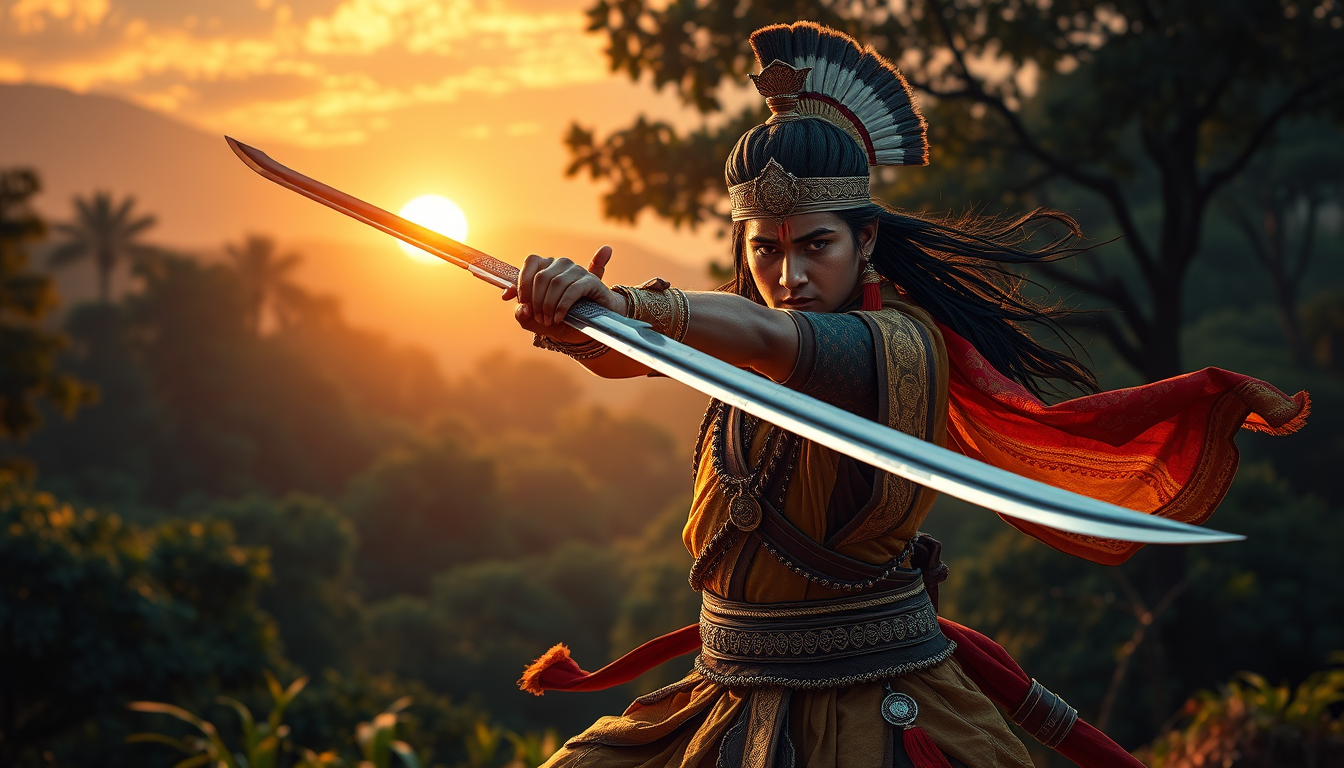Indian swordsmanship, also known as *kalaripayattu*, is an ancient martial art that has been practiced in India for centuries. This art form is not only a means of self-defense but also a rich cultural heritage that reflects the country’s history and traditions. This comprehensive guide will delve into the history, techniques, and significance of Indian swordsmanship, providing insights into its evolution and its relevance in today’s world.
History of Indian Swordsmanship
Ancient Origins
The origins of Indian swordsmanship can be traced back to the Vedic period, around 1500 BCE. The ancient texts, such as the Vedas and the Upanishads, mention various forms of combat and weapons. The use of swords in warfare was prevalent during the Mauryan and Gupta empires, with the sword being a symbol of power and status.
Evolution Through the Centuries
Over the centuries, Indian swordsmanship evolved and diversified, influenced by various regional cultures and invasions. The Mughal period saw the introduction of new techniques and weapons, while the British colonial rule led to a decline in the practice of traditional martial arts.
Modern Resurgence
In recent decades, there has been a resurgence of interest in Indian swordsmanship. This is partly due to the efforts of martial arts enthusiasts and practitioners who have worked to preserve and promote this ancient art form. Today, Indian swordsmanship is practiced not only in India but also in various parts of the world.
Techniques and Styles of Indian Swordsmanship
Kalaripayattu
Kalaripayattu is one of the most well-known forms of Indian swordsmanship. Originating in the state of Kerala, this martial art combines various techniques, including strikes, kicks, and grappling. The use of the sword, or *kathari*, is an integral part of Kalaripayattu, with practitioners learning to wield it with precision and control.
Gatka
Gatka is another popular form of Indian swordsmanship, originating in the Punjab region. This martial art emphasizes the use of traditional weapons, including the sword, shield, and spear. Gatka is known for its dynamic and acrobatic movements, making it a visually impressive form of combat.
Silambam
Silambam is a Tamil martial art that involves the use of a long staff, or *silambam*. While it primarily focuses on staff fighting, Silambam also incorporates techniques for using the sword. This art form is known for its fluid and graceful movements, reflecting the cultural heritage of Tamil Nadu.
The Significance of Indian Swordsmanship
Cultural Heritage
Indian swordsmanship is a significant part of India’s cultural heritage. It reflects the country’s history, traditions, and values. The practice of this art form helps preserve these cultural elements and passes them down to future generations.
Self-Defense and Fitness
Beyond its cultural significance, Indian swordsmanship offers practical benefits. It provides a means of self-defense, teaching practitioners how to use weapons effectively in combat. Additionally, the physical demands of swordsmanship make it an excellent form of exercise, promoting fitness and agility.
Spiritual and Mental Benefits
The practice of Indian swordsmanship also offers spiritual and mental benefits. Many practitioners find that the discipline and focus required for this art form help reduce stress and improve mental clarity. Moreover, the philosophical principles underlying Indian swordsmanship, such as the importance of balance and harmony, can have a positive impact on one’s overall well-being.
The Role of Indian Swordsmanship in Popular Culture
Cinema and Television
Indian swordsmanship has made its way into popular culture, particularly in cinema and television. Many Bollywood films feature scenes of sword fights, showcasing the art form’s dramatic and visually appealing aspects. These portrayals often highlight the skill and grace of the performers, drawing attention to the rich heritage of Indian swordsmanship.
Video Games and Animation
In addition to cinema, Indian swordsmanship has also been featured in video games and animation. Games like “Assassin’s Creed” and “God of War” have incorporated elements of Indian swordsmanship into their gameplay, allowing players to experience the art form in a virtual setting. Similarly, animated series and films have depicted Indian swordsmanship, introducing it to a wider audience.
Learning Indian Swordsmanship
Finding a School or Instructor
If you are interested in learning Indian swordsmanship, the first step is to find a reputable school or instructor. Look for institutions that have a strong reputation and experienced teachers. It is also important to ensure that the school follows traditional practices and values.
The Learning Process
The learning process in Indian swordsmanship typically involves several stages. Beginners start with basic techniques and gradually progress to more advanced moves. This process requires patience, dedication, and regular practice. Additionally, many schools incorporate philosophical and spiritual teachings into their curriculum, providing a holistic learning experience.
Safety and Equipment
Safety is a crucial aspect of learning Indian swordsmanship. It is essential to use appropriate equipment, such as protective gear and safe training weapons. Practitioners should also be aware of the potential risks and take necessary precautions to minimize the risk of injury.
Conclusion
Indian swordsmanship is a rich and diverse martial art that has been practiced in India for centuries. With its roots in ancient history and its relevance in modern culture, this art form offers a unique blend of cultural heritage, self-defense, and personal growth. Whether you are interested in the history, techniques, or cultural significance of Indian swordsmanship, this comprehensive guide provides a comprehensive overview of this fascinating art form.
